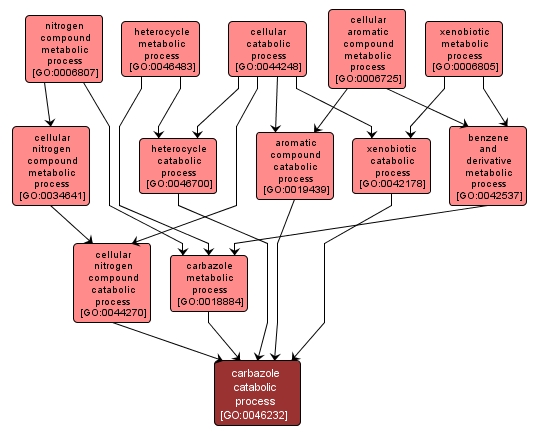| Desc: |
The chemical reactions and pathways resulting in the breakdown of carbazole, a heterocyclic aromatic compound containing a dibenzopyrrole system that is produced during coal gasification and is present in cigarette smoke. Coal tar produced at high temperature contains an average of 1.5% carbazole. It is used widely in synthesis of dyes, pharmaceuticals, and plastics and is a suspected carcinogen. |














